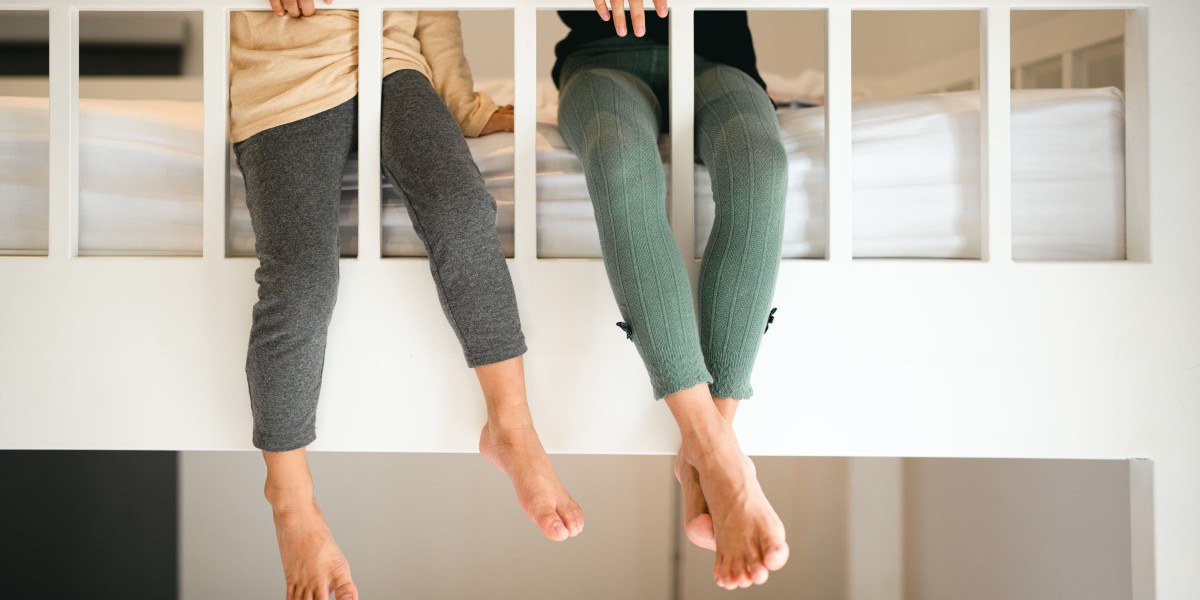
Exploring Bunk Beds: A Comprehensive Guide
Bunk beds have actually long been a staple in children's bedrooms, dormitories, and even homes with limited space. Not just do they supply a practical sleeping solution, however they also produce a fun and creative environment for kids and a great space-saver for adults and households. This post will explore whatever you require to know about bunk beds, from types and materials to security pointers and purchasing recommendations.
Table of Contents
- Types of Bunk Beds
- Traditional Bunk Beds
- Loft Beds
- Triple Bunk Beds
- L-Shaped Bunk Beds
- Material Options
- Wood
- Metal
- Safety Considerations
- Purchasing Guide
- FAQs
Kinds Of Bunk Beds
Bunk beds can be found in numerous designs to fit different needs and choices. Here's a breakdown of the most common types:
Conventional Bunk Beds
Traditional bunks generally feature 2 beds stacked vertically on top of one another. These beds are ideal for siblings sharing a space or for taking full advantage of sleeping space in visitor spaces.
Loft Beds
Loft beds stand similarly to standard bunk beds however do not have a lower sleeping area. Rather, they often include a desk or seating location underneath, making them a great option for little rooms requiring multifunctionality.
Triple Bunk Beds
Triple bunk beds are designed for 3 occupants, with beds stacked in a three-tier configuration. These are less typical but can be an enjoyable service for big households or sleepovers.
L-Shaped Bunk Beds
With one bed positioned horizontally and the other vertically, L-shaped bunk beds are typically equipped with extra features such as desks or storage drawers and can complement corner areas in a space.
Comparison of Bunk Bed Types
| Bed Type | Suitable Use | Description |
|---|---|---|
| Standard | Shared bedrooms or visitor rooms | 2 beds stacked vertically |
| Loft | Small spaces needing multi-purpose space | Upper bed with open space below |
| Triple | Large families or pajama parties | Three beds stacked vertically |
| L-Shaped | Corner or versatile spaces | A combination of vertical and horizontal beds |
Material Options
Bunk beds are manufactured from numerous materials, with wood and metal being the most typical. Each product has its benefits and drawbacks.
Wood
- Toughness: Generally robust and can endure years of use.
- Visual Appeal: Offers a timeless look that can mix with numerous decorations.
- Weight Capacity: Typically tougher; can support heavier weights.
- Downsides: May be more expensive than metal alternatives and can be susceptible to scratches.
Metal
- Toughness: Generally lightweight and simple to move but still durable.
- Modern Design: Often is available in smooth styles, making it appealing for contemporary areas.
- Cost-Effective: Usually cheaper than wood options.
- Downsides: Can be cold to the touch in winters and may not have the same visual appeal for some buyers.
Safety Considerations
When it pertains to bunk beds, security can not be ignored. Here are essential safety tips to remember:
- Guardrails: Ensure that the leading bunk has guardrails on both sides to avoid falls.
- Durable Construction: Check for a solid develop and tough products to withstand weight and motion.
- Weight Limit: Adhere to the producer's weight limitation for both the upper and lower bunks.
- Ladder Design: Choose bunks with a safe, easy-to-climb ladder and avoid any sharp edges or rungs.
- Age Restrictions: Most manufacturers advise that kids under the age of six ought to not oversleep the upper bunk.
Buying Guide
When shopping for bunk beds, think about the following aspects to find the very best fit for your needs:
- Space Availability: Measure the room size and ceiling height, ensuring there is appropriate space for the leading bunk.
- Bed Size: Decide between twin, complete, or bigger sizes based on your requirements and the size of the space.
- Style Preference: Consider the general decoration of the bedroom to find an ideal style.
- Alleviate of Setup: Look for a bunk bed that is uncomplicated to assemble.
- Budget: Bunk beds can be found in different price ranges, so identify a spending plan before starting your search.
Frequently asked questions
1. What is the recommended age for children to sleep on the leading bunk?
Kids aged six and older are generally suggested to sleep on the leading bunk to decrease the risk of falls.
2. How can I make my bunk bed safer?
To boost safety, ensure guardrails are effectively installed and check that the bed is positioned on a flat surface. Furthermore, encourage kids to use the ladder thoroughly.
3. Can I transform a bunk bed into 2 different beds?
Lots of bunk beds are created to be convertible. Examine the manufacturer's specifications for convertibility functions.
4. What accessories are offered for bunk beds?
Common devices consist of bed linens, storage drawers, staircases instead of ladders, and tented canopies for a fun visual appeal.
5. How do I maintain my bunk bed?
Regular look for loose screws or structural stability can assist guarantee safety. Dust the bed routinely and clean spills promptly to keep the materials in good condition.
Bunk beds are versatile and a space-efficient service for numerous living scenarios, from kids's spaces to visitor lodgings. With many styles and materials offered, possible buyers have a wealth of choices to think about, making sure a combination of functionality and aesthetics. By prioritizing safety and following the suggestions outlined in this guide, people can discover the ideal bunk bed that fits their space and way of life, all while developing a satisfying sleeping environment.








